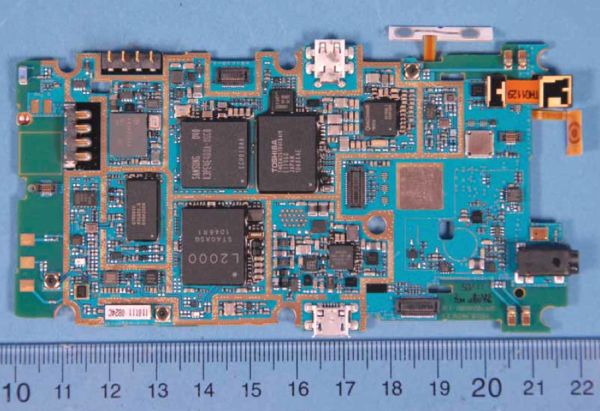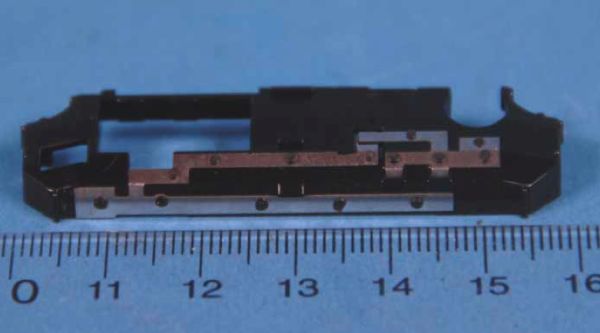LG Revolution: LTE for the Masses
by Vivek Gowri & Brian Klug on June 21, 2011 5:55 AM EST- Posted in
- Smartphones
- Verizon
- LTE
- Mobile
- LG Revolution
We've talked about the cellular architecture of the HTC Thunderbolt and Verizon's 4G LTE network in general, we're going to talk about the Droid Charge's and it's time now to talk about the LG Revolution's. Each phone is a bit different, but both differ significantly from the HTC Thunderbolt in that they don't offer the ability to simultaneously transact data and maintain a voice call.
For a quick refresher, the HTC Thunderbolt is based on a combination of the cellular baseband from Qualcomm's MSM8655 SoC, and MDM9600. The MSM8655 maintains 1xRTT for call processing, the MDM9600 handles both EVDO and LTE data. Things are different with both the LG Revolution and Droid Charge.
The LG Revolution (as we've already mentioned) is based on Qualcomm's MSM8655 SoC. However, in this configuration, the part handles all 3GPP2 connectivity - that means 1xRTT for voice and slow data, and EVDO for faster 3G data. 4G LTE connectivity is supplied using LG's own cellular baseband, the L2000. L2000 is also used in LG's 4G LTE modem dongle, the VL600. The combination of MSM8655 and L2000 means that the LG Revolution supports simultaneous voice and data only when connected to 4G LTE.
There's not much to say about the L2000 quite honestly. Like both the Samsung CMC220 in the Droid Charge and the Qualcomm MDM9600 in the Thunderbolt, it is a category 3 modem, meaning it supports the exact same maximum throughput rates and should offer very similar performance. All three modems are only provisioned and certified for Verizon's LTE band 13 in each handset as well. Again same as the Thunderbolt, the LG Revolution has two Rx antennas for Rx diversity, and one Tx antenna.
Verizon famously showed off the LG Revolution on stage doing a voice call over Verizon 4G LTE. Unfortunately that functionality is disabled in this final version, as it is on every 4G LTE device we've tested. It's in the FCC certification documents, and without an amendment will likely remain off until the next 3GPP release when voice comes back around.
The interesting thing about the LG Revolution is that it actually already has been through the FCC once, then went through a second time for a class 2 change. This change added power reduction management for supporting simultaneous voice, LTE data, and WiFi modes. Anytime the hotspot is active, power reduction is applied to either voice or the LTE data session until the hotspot is deactivated. Like we discussed with the Thunderbolt, these changes were put in place to prevent the handset from exceeding SAR requirements. The interesting additional note is that the LG Revolution appears to have undergone a slight board rework and received a different antenna between FCC visits. Either way, the final shipping device properly implements all the requisite power reduction schemes for simultaneous operation of all the relevant radios.

As we'll show shortly, the L2000 seems to be pretty light on power consumption, putting the LG Revolution at the front of the pack in our battery life suite. Vivek did his testing in the Seattle, WA area, while all of my testing has so far been done in Phoenix, AZ or Newport, CA, but at this stage in the game every Verizon 4G LTE market is running on the same 10 MHz FDD of LTE Band 13, and we've been careful to keep receive power about the same. Remember again that the only part of the LTE cellular architecture that has a power control loop is from handset to tower, and our tests consist of loading many webpages, which ends up consisting of much more data heading from the tower to the handset than the other way around.
Regardless, the important takeaway is that we're confident we have comparable battery life numbers, and interestingly enough the LG Revolution comes out on top. That said, the difference ends up being a whole 40 minutes, plus or minus our margin of error. If you're looking for super long battery life, basically none of the 4G LTE phones are going to cut it right now.
The LG Revolution allows one to force 1x/EVDO, or 1x/EVDO + LTE, but not manually force LTE-only data connectivity plus 1x voice. The former gets you better battery life by only using the baseband on the MSM8655, the latter gets you 4G LTE in addition by using L2000. You can decide to make that tradeoff however.











24 Comments
View All Comments
Spoogie - Tuesday, June 21, 2011 - link
In spite of the hype, I’m also turned off by 4G but for different reasons than battery life, though it is also an important consideration.When I purchased a 4G modem in January from Verizon, the connection was intermittent. And it would be down completely while searching for backup 3G… totally unacceptable. Verizon claimed that it should be a good connection based on the geography (Bay Area). Tech support was no help.
Recently I was in the market for a new phone, and while standing in the Verizon store admiring the Samsung Charge, low and behold the phone lost connectivity… while the 3G phones right next to it just hummed right along.
This led me to do some further investigating, and others report similar experiences, such as PhoneDog, who claims he has spotty performance with 4G in Philly and believes it isn’t ready for prime.
Although this doesn't exactly constitute a scientific study, I have no faith in it.
VivekGowri - Tuesday, June 21, 2011 - link
I don't know, I haven't tested LTE anywhere other than Seattle, but I've got coverage basically everywhere I've gone here. Once you head up into the northern parts of the area, to Everett and such, I've lost 4G, but the EVDO handover works pretty seamlessly. Signal strength was usually pretty good too, I was impressed.Impulses - Tuesday, June 21, 2011 - link
Sprint's Wimax may not boast LTE's impressive speeds across most markets, but at least you can seamlessly turn it off/on at the flick of a widget, right out of the box, which makes it easier to preserve battery life when you need to.I've got a question, do VZW LTE phones constantly poll the LTE radio even when outside of LTE markets or is there some software list that shuts them off completely outside LTE markets?
I'm particularly curious because PR isn't likely to have true 4G for a while, yet the carriers sell the very same phones here... Sprint has started testing Wimax in some areas (which is curious since this isn't a Clearwire market), but it seems they're still a long way off before any kind of solid announcement.
In the metro area they're literally just testing it on a handful of towers, and it isn't even on all the time... I guess it might be part of the procedure for their Vision deployment, even if there aren't any permanent 4G plans.
Impulses - Tuesday, June 21, 2011 - link
Oops, just saw you mentioned the same thing about Wimax on the article... I had only read the first and last page when I posted the comment. My question about how LTE is polled or detected on a stock phone still stands tho.I know you can disable it thru service menus and there's probably an app or two that can make that easier, but not everyone that buys these phones outside LTE markets is gonna go looking for those.
wintermute000 - Tuesday, June 21, 2011 - link
for now, good quality HSDPA+ is fine (Telstra user in Australia).Most modern droids can get theoretical 14M down, in practice being able to consistently pull down 1Mb+ almost anywhere, is good enough for anything but streaming. (I have to admit on some days, streaming podcasts cuts up a bit) but raw throughput is fine. '
I'd rather go dual core now and get the LTE phones in a year or two for that price
jonup - Tuesday, June 21, 2011 - link
Can we get these phones down to 100g? Everytime I pick up my coworkers' iPhones and Droids one thought comes to my mind "Why are you so fat when you hauling this brick all day"?vision33r - Tuesday, June 21, 2011 - link
Everytime I see a Thunderbolt user on the train, it's usually for a hotspot and then I see them busting out the blackberry for emails.Right now these LTE devices are only for IT pros that have the need for the speed and the companies paying for them.
They are like every new tech devices just the 1st to market but not ready for mainstream adoption until they fix the power consumption and size.
2nd gen to 3rd gen will replace 3G devices they will take 5 years to happen.
antef - Tuesday, June 21, 2011 - link
That speed is very impressive for a mobile broadband network but honestly who cares? No activity on your phone is going to make much use of anything beyond a few Mbps for things like streaming video. Can you provide a single instance where you'll notice 3 Mbps vs 18 Mbps except when running the Speed Test app? In addition to that, with Verizon's rumored upcoming 2 GB cap on $30 data plans, the speeds are even less appealing. What we need is better battery life, higher caps (or no caps), and reliable, good enough throughput anywhere you go (~3 Mbps or so), not absolute blistering speeds.DigitalFreak - Tuesday, June 21, 2011 - link
That's why you buy before the cap gets implemented.VivekGowri - Tuesday, June 21, 2011 - link
Streaming video, mostly. LTE is so fast that we've gone back to smartphone browsing being limited by how fast the phones can render pages.